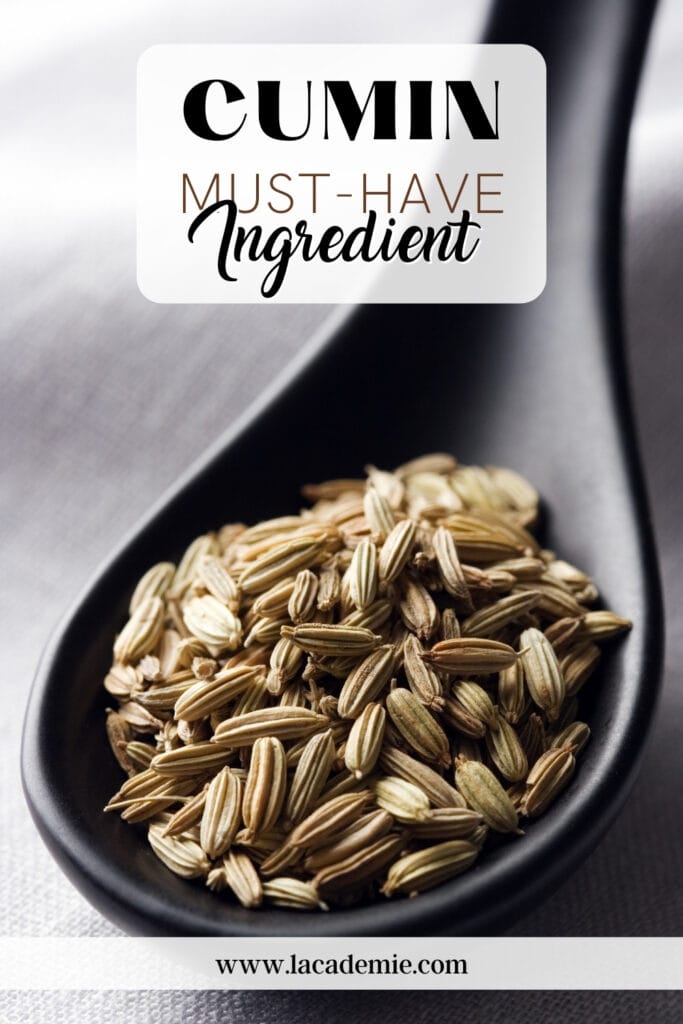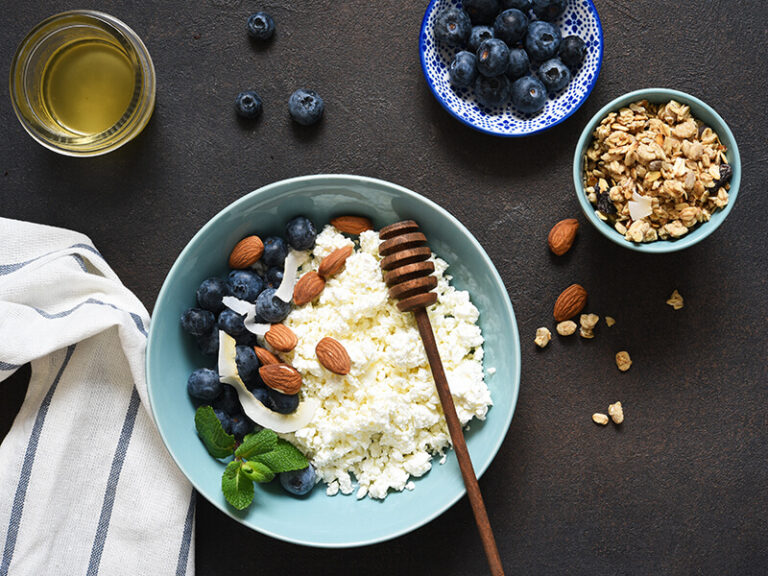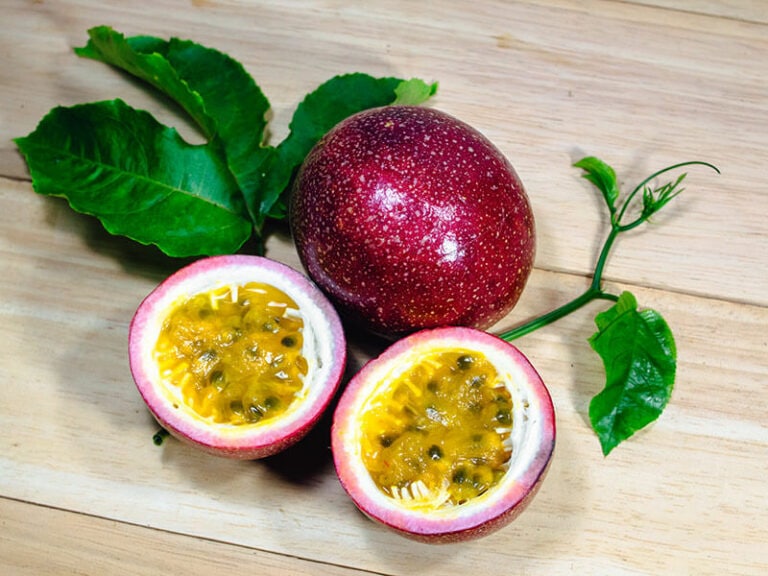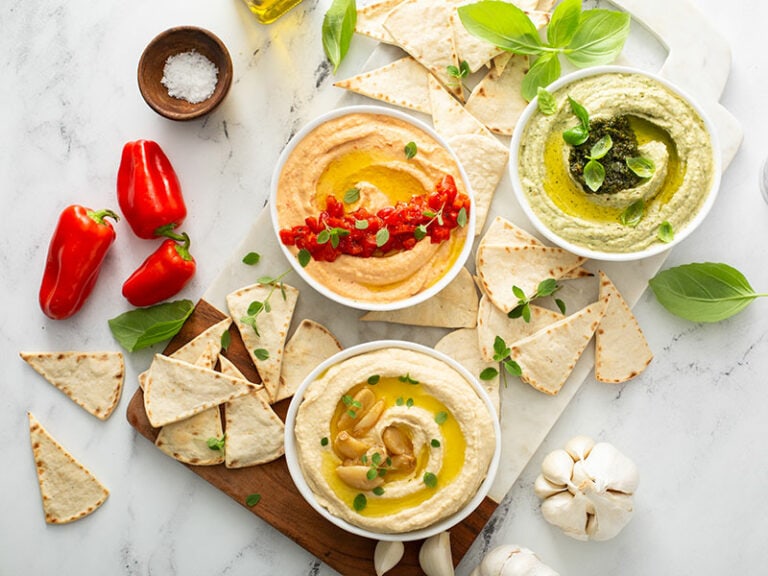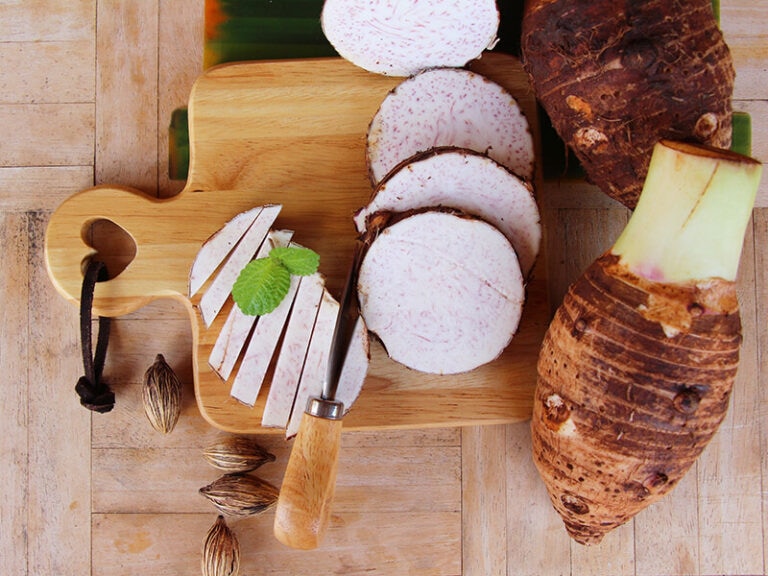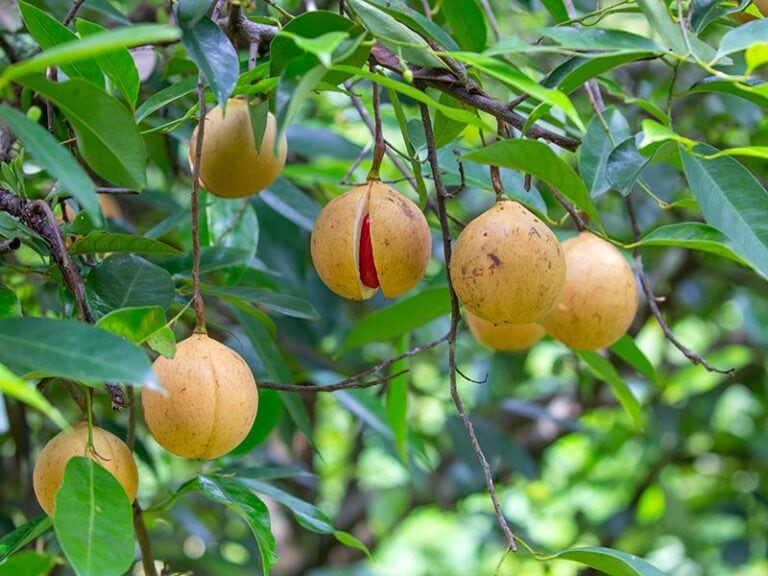Have you ever wondered about the flavor of cumin? Indeed, without a touch of spices, like cumin, a dish cannot be called perfect.
Nowadays, because of its versatility, people can also use cumin for other purposes like adding it to tea, for example, making your favorite ginger tea taste better, or as a component in cosmetics, medicines, perfume products.
So today, you and I will acknowledge everything about cumin – a significantly versatile spice that features prominently in oriental cuisine.

What Is Cumin?
A flowering plant belongs to the Parsley family that is indigenous to the Eastern Mediterranean and East Indies. It is a perennial herbaceous plant, which can grows to 12-24 inches. The slender and glabrous stems will form small branches from 8 to 12 inches. The pinnate or bipinnate leaves are 2-4 inches long, with thread-shaped leaflets.
The small flowers are white or pink, thriving in the canopy. The fruit is oblong, 4-5mm long, with a single seed. Watch this video to get the first images of the great spice.
Cumin has been used as an essential spice in many dishes for a thousand years, for instance, in culinary recipes in Middle eastern styles, or in many delectable side dishes in many cuisines. Overall, the importance of cumin in the cooking world is undoubted.
So, which special features make cumin more distinctive than other herbs? Keep reading this article to find out more about this “magic” ingredient.
Seed Or Powder?
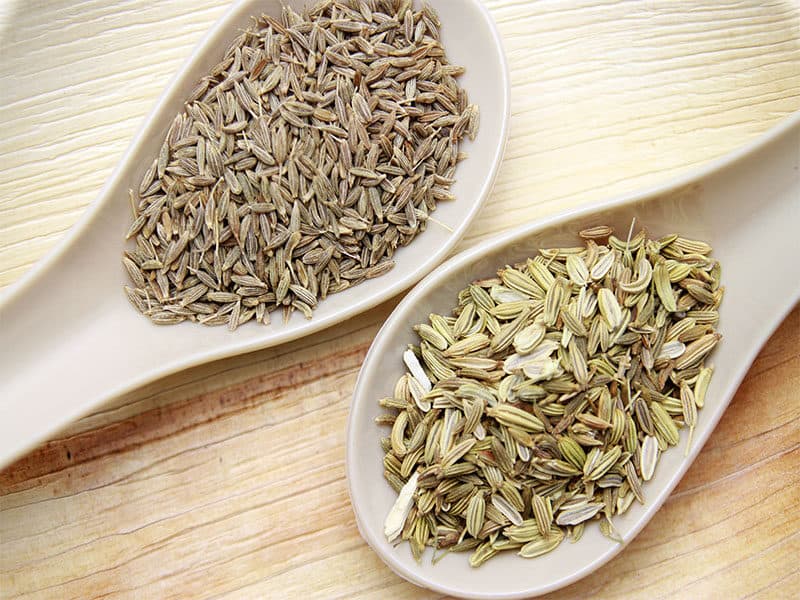
Although there are various types of cumin you can try, cumin is available in 2 forms: whole seed and ground, with ground cumin being the most common. So depending on the requirements or several recipes, you can choose which type is the best.
Whole seeds will add to the early cooking process, which allows them to infuse hot oil to impart a unique taste to the dish. In terms of ground, it can be added anytime to enhance the aromatic flavor of the meal.
The seed is a more pungent aroma and a gently spicier flavor than ground cumin. Nowadays, cumin appears in many grocery or convenience stores, making it accessible to anyone.
What Does Cumin Taste Like?
Cumin has a powerful smell and taste. You will find that this spice has earthy and warm, rich and hearty, and also have a bittersweet taste on its own. Cumin’s slightly bitter side and pervasive fragrant make it an appealing chewing spice for many people.
Although the spicy taste will appear first when experiencing it, it does not imply that it has the same spicy level as pepper or chilies.
It can bring out the sweetness of root vegetables and boost the savory flavor of the meat (beef or lamb), making them so perfect to prepare. So it would be a huge miss if you haven’t tried this dish with cumin.
Moreover, I love how cumin adds instant depth to other dishes, making it the flawless ingredient in many Middle Eastern, Indian, Latin foods.
Health Benefits
In addition to having the necessary flavoring for recipes, undoubtedly cumin seeds provide several health benefits. Let’s explore each of cumin’s good side.
Promote Digestion

The most prevalent benefit of cumin is for digestion. The presence of essential nutrients will support the immune system better. Moreover, cumin has vital oils which can strengthen digestion by stimulating the stomach acid.
And the digestive enzymes (pancreatic enzymes: amylase and lipase) will create natural juices to break down foods. The lipase enzymes incorporate bile generated from the liver to digest fats in the small intestine.
The amylase enzyme will provide energy for the body by breaking down starches into sugar. Therefore, cumin will potentially speed up digestion.
Treat Diabetes

A natural remedy can control the blood sugar level in the human body by increasing insulin production. Many studies are implemented to prove the merits of cumin.
According to many specialists, cumin water is good for diabetic patients. So why don’t you start your day with a cup of top-tier turmeric tea with a bit of cumin spice? I guarantee your health will be improved.
Weight Loss

There are many methods to cut down “fat” in the body. You can try this healthy way by adding “miracle” spice in your meal because it supports getting the ideal weight. In addition, it also has a beneficial impact on the fat of the body by decreasing levels of unhealthy lipids in the blood.
Aid Respiratory System

The richly aromatic crucial oil makes cumin a terrific anti-congestive element, which can aid to eliminate the mucous and phlegm are accumulated in the lung. Hence, making it has become an excellent treatment for asthma and colds.
Better Memory

Cumin contains many vital minerals that can nourish the brain cell flawlessly, such as vitamin B6, riboflavin. So when using cumin, it can sharpen the memory and faster recall. As can be seen that cumin is immensely beneficial for human health
Soothes Skin

The anti-inflammatory properties of cumin are a great feature in eliminating bacteria on the skin and treating the pimple. Moreover, vitamin E will decrease signs of aging such as sagging skin, wrinkles,… Utilizing cumin water to wash the face can keep your skin glowing.
Lower Cholesterol

High blood cholesterol is one of the main reasons for heart disease and even increases stroke risks. As a matter of fact, controlling cholesterol levels is a critical aspect of your health. Simply adding cumin to your cooking recipe may be beneficial in the long run.
Unexpected Downsides
Cumin is an inevitable ingredient in Indian, Middle Eastern, Latin cuisine. As a result, every homemaker will prepare in their pantry. Nevertheless, excess consumption is not good. In fact, like other things, cumin also has two sides to the same coin. Below are some side effects that you should know.
Heartburn

The gas-relieving properties make cumin can cause some common digestive issues: heartburn. Burning pain in the chest is the clear symptom after eating.
Liver Damage
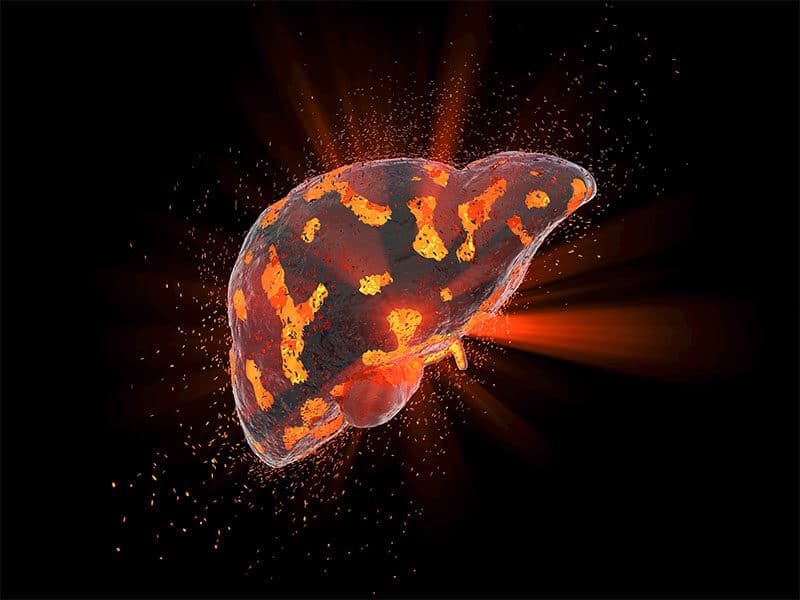
The presence of oil in cumin seed is volatile, which can cause harm to the liver. If you intake a large amount of cumin for a long time, your liver might not stay in good condition.
Low Blood Sugar Level

This signal might happen when the amount of glucose is lower than normal. You may get faint, have a seizure or go into a coma if you have a large consumption of cumin for a long time. Remember always to control the blood sugar in check by monitoring its level regularly.
Narcotic Effect

Other cumin’s side effect is mental clouding, nausea, and drowsiness. With the narcotic feature, keep in mind that use cumin with cautions to prevent consuming excess amounts.
How To Make Cumin Powder?
Just a few easy steps, the cumin ground will be ready for use. You can make a big batch, which you can use in one month. Let’s see how to make cumin powder right in this post guide!
#Step 1: Preparation
Get 2 cups of raw seed, and then clean it under the clean water. It means that all the dirt, mold, or other tiny debris are sticking out on the surface of the seed, following the flow of water. Next, drain all the excess water and let’s cumin seed dry.
#Step 2: Roasting Cumin Seeds
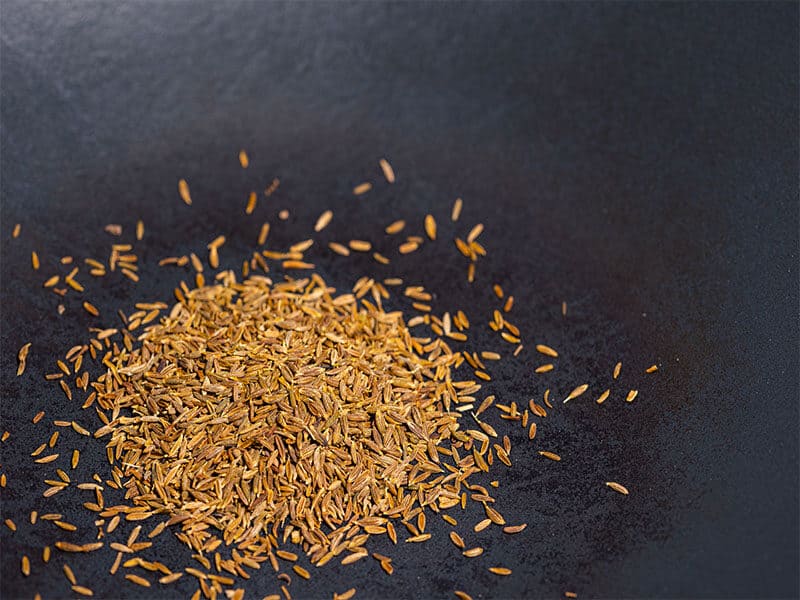
Roasting seeds will reduce their bitterness and boost the taste profile by accumulating more earthy and warming aromas. There are three different ways to roast the perfect cumin seeds.
- Traditional Way: Place the washed seeds on the tray, and keep it under the sun. It is a natural method of drying the seeds. However, it will take about one day to dry completely. Make sure that choosing the clean areas to put the tray on, preventing the seed from dust.
- Utilizing Microwave: Put the seed on the plate and keep it in the toaster-oven or microwave for about 3 minutes. The heat from the machine will dry the seed efficiently and quickly.
- Using Stovetop: Take your frying-pan, skillet, or even your most-loved carbon steel wok and place it on the stovetop. Next, spread the washed seed on the cookware’s surface and set low-medium temperature. Make sure to stir it continuously until you get the great aroma and slightly dark in color.
So, turning off the stovetop, transferring all the seed on the plate, and lets them cool down.
#Step 3: The Terrific Result
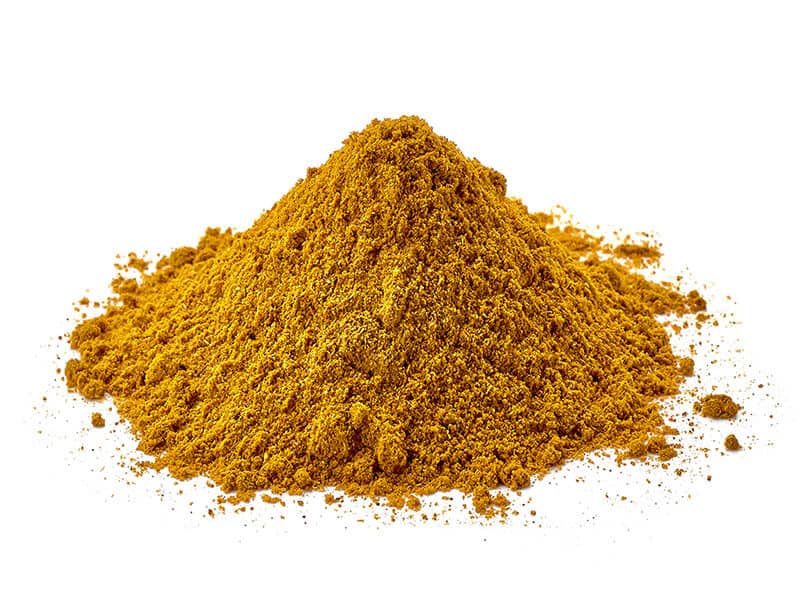
Making ground without grinder: It is suitable for a small amount of seeds. This method needs to pressure the hand on a rolling base to break down the seeds into tiny pieces. Roll over the seeds until you get the coarse powder.
Making powder with grinder: Everything is simple, just effortlessly move the seed to the jar. And start the machine up to grind the seeds until they get the smooth powder.
#Step 4: Storage

Now, use a small container to preserve the powder and keep it a cool place. Typically, this one will last for one month at room temperature and up to 6 months in the freezer.
Ready To Cook With Cumin?
Cooking is not a skill. You can learn from many sources to improve, like from several high-quality cooking courses, or even from videos on YouTube… Try making my favorites recipes below, so now you can enjoy this earthy and warm taste in various ways
Homemade Gyro Meat: Make restaurant-quality dishes at home. Blend cumin ground, garlic powder, and Greektown seasoning thoroughly into the ground meat. Spread a thin layer into the tray, and bake it until you get the desired texture. Cut into strips and serve it with sliced onion or tomato, especially top with cucumber sauce.
Cumin Rice: Cumin is a star ingredient to make this delectable dish. Soak the basmati rice or brown rice in the water for at least 30 minutes. Heat the cumin, ghee, and other spices (bay leaf, cinnamon stick) in the pot together.
When the cumin reveals the fantastic fragrance, add the green chili and rice to it. Sauté the mixture about 2 minutes before pouring 2 cups of water and adding salt to the dish. The herbs will absorb immensely well in the rice.
Cook this pot for appropriately six minutes until the water has evaporated. This time, the delicious cooked rice is ready to serve. Try it.
Potato Curry: Heat the onion and garlic with oil in a large pan until translucent. This time should add curry powder, cumin, ginger, salt, pepper, paprika, and cayenne to cook for about 2 minutes till the spice reveal a pleasant aroma.
Next, add prepared potatoes into the mixture to absorb the herbs before adding chickpeas, broth, tomatoes, and lemon juice. Pour the coconut milk and stir to incorporate. The final step is to simmer all the mixture around 15-20 minutes with medium heat till the potatoes are tender.
Now, let’s enjoy the delectable meal with cooked rice perfectly.
Carrot Cumin Soup: Another way to use cumin is to make this dish, based on the traditional soup which comes from Middle East. It is incredibly healthy (no fat) and easy to prepare. Firstly, sauté carrots, potato, and onion with truffle oil in a large pan for about 5 minutes.
Pour 6 cups chicken stock to cook till the vegetable are cooked well or you can even try roasted vegetable. Blend the mixture to a smooth texture before adding vital spices (cumin, salt, and pepper). The final result is immensely creamy, even don’t use any cream cheese or cream cheese substitute in it.
Substitutes For Cumin
Cumin has many excellent alternatives that available in the pantry. When you out of this spice, replace it with other herbs that similar to cumin to rescues the recipe.
Ground Coriander
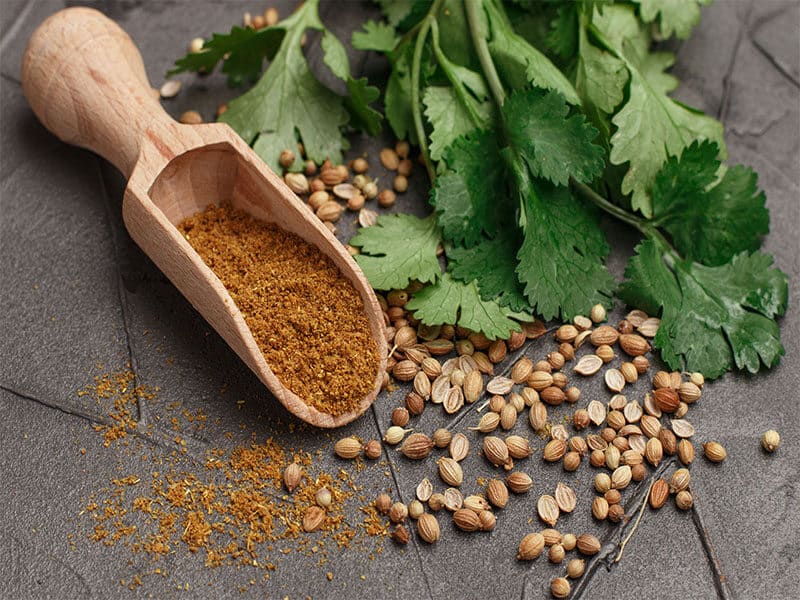
This spice is also well-known as cumin in the Middle Eastern, Latin, and Indian cuisines. The coriander will deliver a lemony and earthy taste to the dish, but it is milder than cumin.
You can use coriander to replace cumin, and vice versa, use cumin as an ideal coriander’s alternative. But make sure you use a precise swapping ratio for the exchange.
Caraway Seed
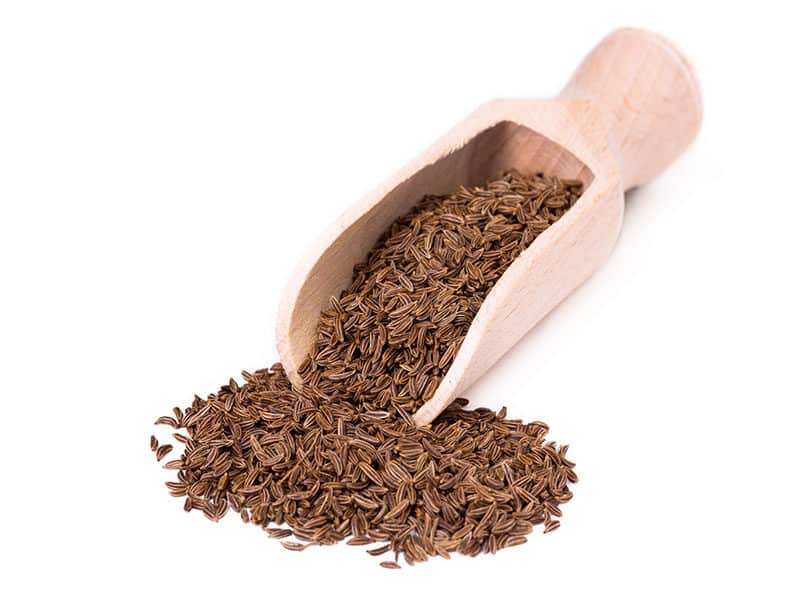
It is a parsley family member as the same as cumin, making it a proper substitute. It tastes nearly the cumin flavor, however, is not strong as cumin. An important note when replacing cumin is that the seed version should substitute together, while caraway ground will support cumin powder.
Chili Powder
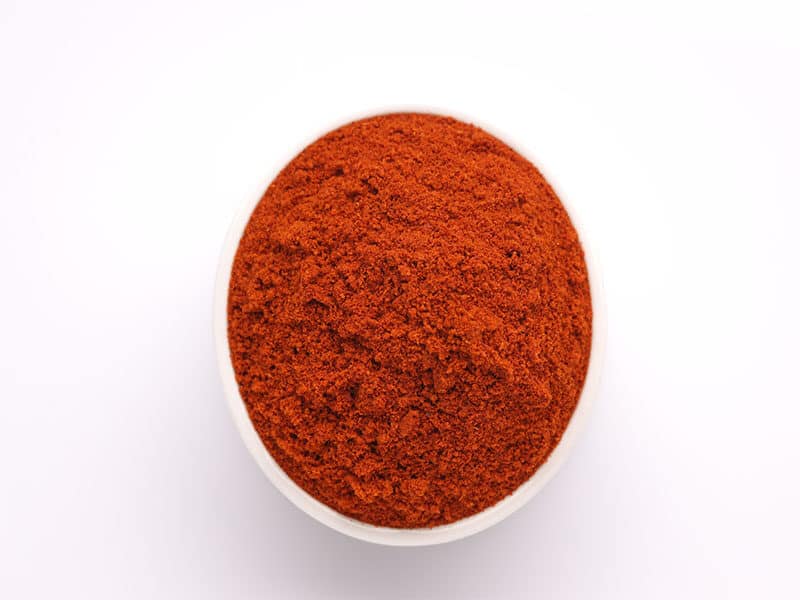
Another suitable substitute is chili powder, which can give intense spiciness to various recipes, especially Southwestern like taco or chili. Just use a haft of amount chili powder to replace cumin in the recipe.
Curry Powder
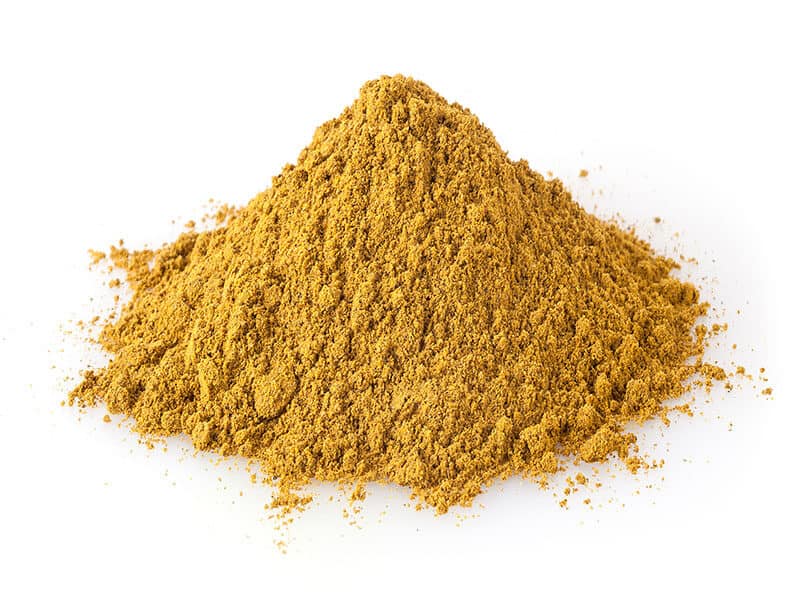
It also contains cumin, making it a superb substitute. Moreover, it still brings other flavors you may not expect to exist in a meal, so consider carefully before substituting. In addition, it contains turmeric, which will bring a vibrant yellow to your dish.
Garam Masala
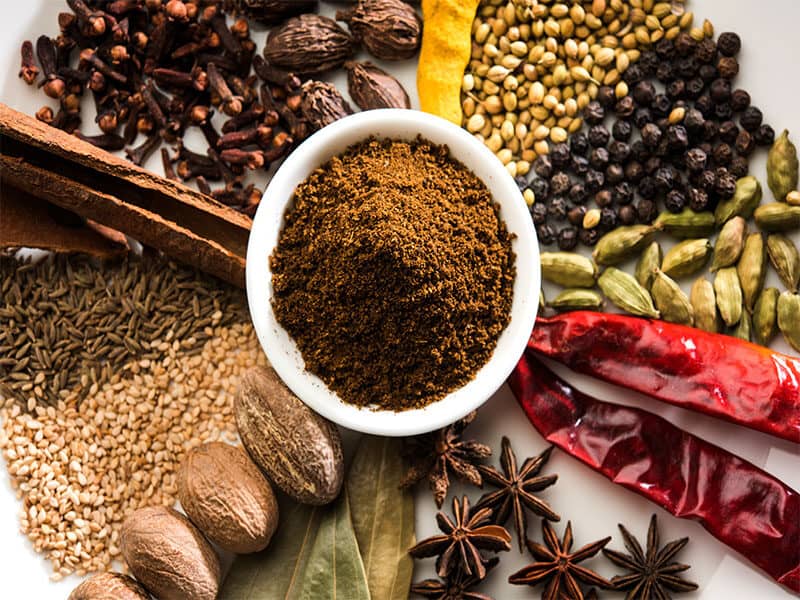
This complex spice is often utilized in India, South Africa, or Mauritius cuisines. Commonly, it will be added at the end of the cooking process for optimal flavor, delivering the dish a citrusy, warm, and attractive fragrant.
Paprika
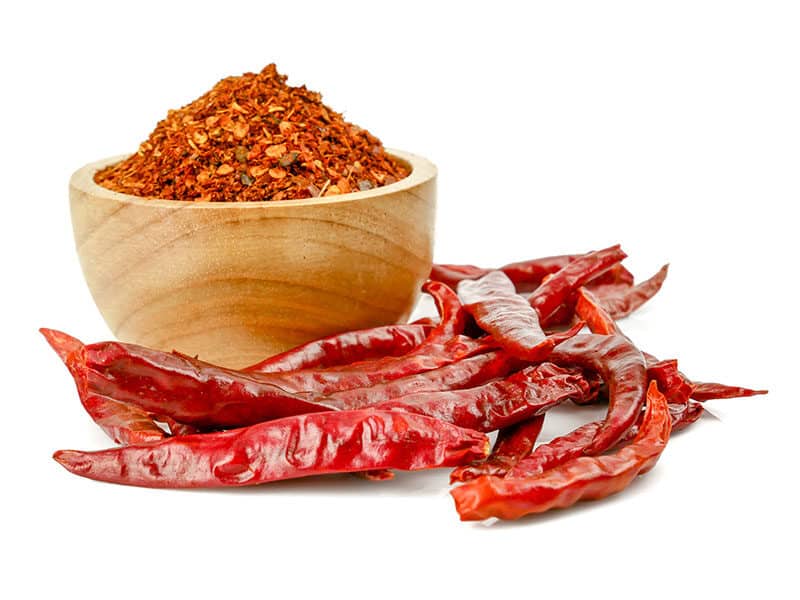
Similar to cumin, this spice will bring smokiness and add a reddish tone to the meal. Therefore start with small quantities and season it until you get the desired taste.
Fennel Seeds
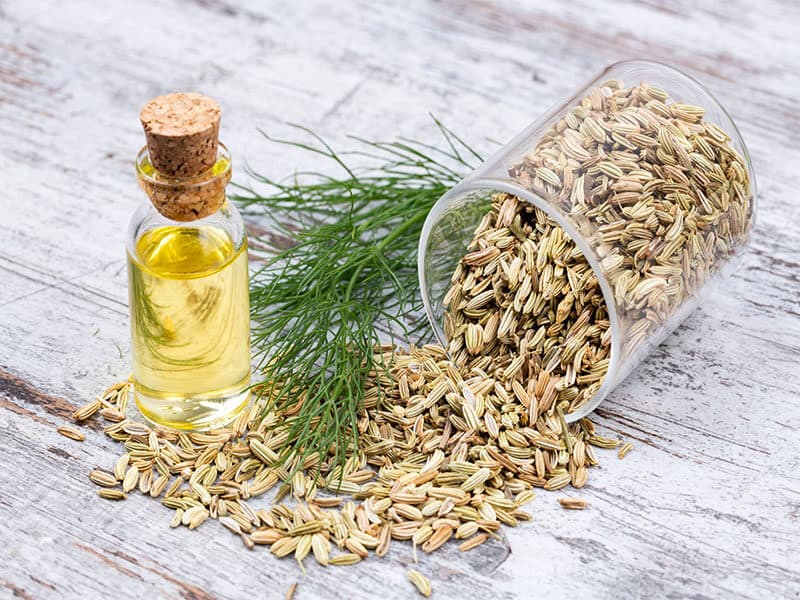
It is also a good alternative that you should consider picking. It has licorice flavor, which cumin lacks. Furthermore, fennel seed is not as smoky or earthy as cumin, and it still meets the standard for substituting.
Likewise, you can use cumin in place of fennel seeds. They can work in a pinch in many dishes that call for fennel.
FAQs
Finally, cumin’s quest to find the hidden “magnificence” is coming to an end. Bear with me a small part as I will go over a few of the issues I have run into while using cumin. It might be useful to you soon.
The Worldly Spice
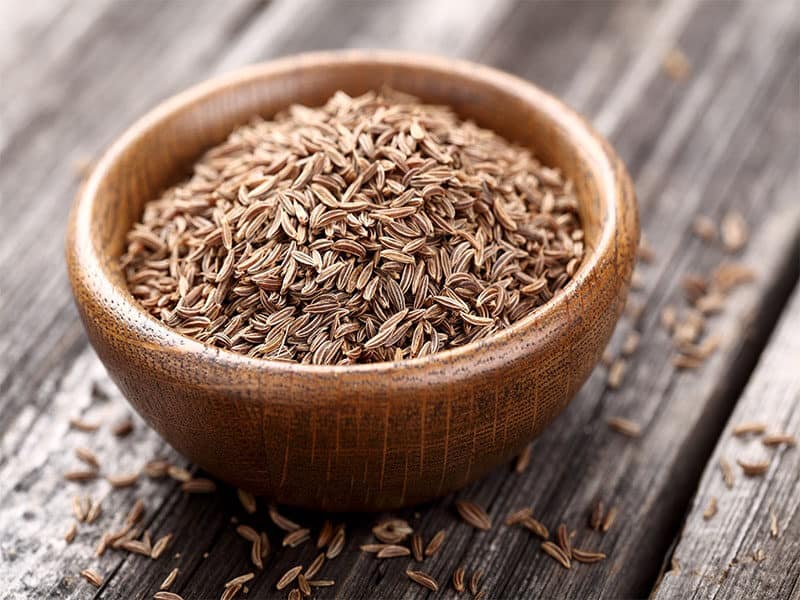
Cumin can be added to any cuisine, from Middle Eastern, Latin America to Indian or North African foods. Don’t miss out on this versatile spice. Just utilize it with confidence to reap the most significant health benefits.
Now your turn, do you cook with cumin or use it as a home remedy. Just feel free to add your voice in the comments and fill me in. In the meantime, let’s share this informative post with your friends, families which will help them know more about the incredible spice – Cumin.
